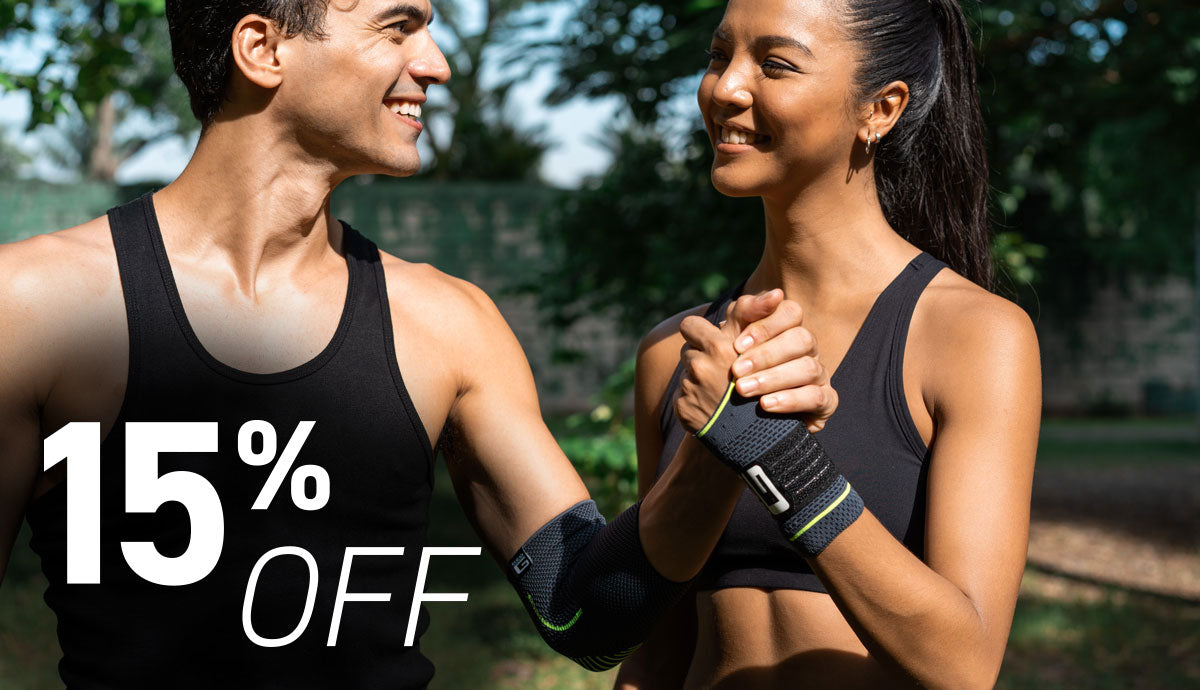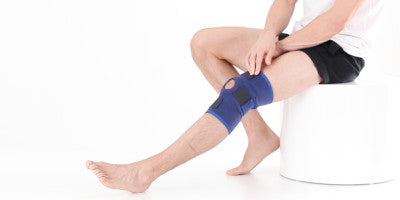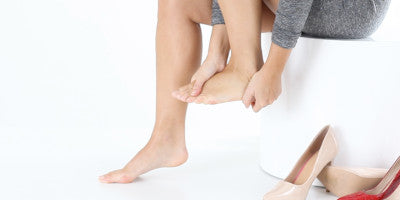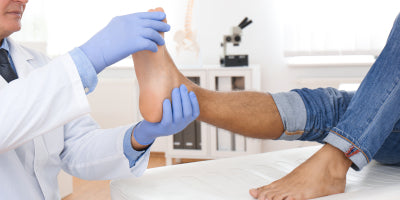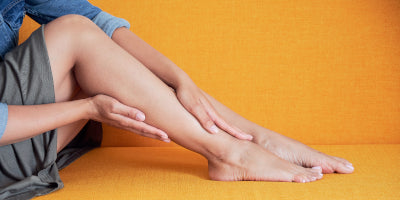Meniscus Injuries – Causes, Symptoms and Treatments

What is a Meniscus?

The meniscus is a crescent shaped fibrocartilaginous structure that will partially divide a joint cavity. Most commonly these are found in the knee joint but there are also found in a few other smaller joints of the body. In a healthy knee joint you will have two complete menisci that are present between the thigh bone (femur) and the shin bone (tibia) and are named based on the location in relation to the joint. The medial meniscus is located on the inside the knee joint (closest to the centre of the body) whereas the lateral meniscus is located on the outside of the joint.
The main role of the menisci is to absorb the forces in the knee joint as well as assisting with maintaining a healthy stable knee joint capsule. Any damages to the meniscus can alter the biomechanics of the knee joint leading to further knee problems over time.
What is a meniscus tear?
Many people may not have heard the term meniscus tear until they have actually had this injury diagnosed, but terms that are commonly used are "damaged" or "torn" cartilage. Meniscus tears usually occur for one of two reasons: either as a result of trauma or from a gradual degeneration of the meniscus either through age or following other knee issues. Both forms of the injury usually occur from a form of twisting the knee, however the traumatic injury is more likely to require a larger amount of force to be applied through the joint which can result in further injuries to ligaments in the knee such as ACL ruptures.
A meniscus can be torn, partially ruptured or totally ruptured with medial tears being the most common reported injury out of the two menisci. Meniscal tears are graded depending on how severe your injury is with grade 1 and 2 injuries typically being managed non surgically where as a grade 3 tear will usually result in some form of surgery. The actual tear will be categorized by looking at the length, depth and pattern of the tear.
What are typical symptoms of a meniscus tear?

At the time of the tear occurring some individuals often feel a pop in the knee. Depending on the severity you may still be able to walk on the injured knee but it’s likely over the next couple of days the knee will gradually stiffen up to the point that you are unable to bend or extend your knee fully.
Pain in the knee can vary in severity and longevity and it can occasionally come and go. Swelling will usually occur hours after the tear has occurred. However, depending on the usual anatomy of your knee joint, you may already have a level of swelling therefore swelling alone is not an indication of this injury.
Depending on the type of tear you have suffered, you may find that you have a clicking sound in your knee when it bends, or your knee can lock out. This usually occurs when part of the meniscus is catching on other areas of the joint.
There are several physical examinations that can be conducted by a physiotherapist, or other trained medical professionals, to narrow down various problems of the knee joint, but to truly diagnose a torn meniscus you will need an MRI scan to show the meniscus.
Meniscus Injury Treatment options, non-surgical and surgical

At the point of injury, pain and swelling are usually the main issue and would form the basis of the first stage of treatment. During a meniscal injury other structures around the knee will also likely be damaged, such as the soft tissues. In the last few years a new principle for the management of soft tissue muscle injuries has grown in popularity which involves the acronyms PEACE (Protect, Elevate, Avoid anti-inflammatories, Compress and Educate) and LOVE (Load, Optimism, Vascularization and Exercise). To learn more about this principle we have a blog dedicated to this new principle which can be found here. As a meniscal tear itself does not directly involve any soft tissues we continue to use the POLICE principle (Protect, Optimal Loading, Ice, Compression and Elevation) that involves a lot of similarities to the new PEACE and LOVE principle.
To avoid further damage to the knee, for the first three days after injury you should avoid running, massage, heat and alcohol. These will put additional loads/forces on the already weak joint or they will relax the muscles and structures around the joint that are helping to provide stability. To help relieve pain, you may wish to take over the counter painkillers, some of which will also help to reduce inflammation and swelling however some medical professionals are starting to move away from advising painkillers as they look to adopt methods from the new PEACE and LOVE principle. If you are in any doubt about the use of painkillers for your condition, we advise speaking to a relevant medical professional.
Physiotherapy as a non surgical treatment option will be designed around 4 main areas: strength exercises, flexibility exercises, mobility of the joint and balance/agility work. These areas are intended to keep the range of motion in the knee joint and bring it back to the level it was pre-injury.
In cases where conservative treatment has not worked or the tear is more severe then surgery may give the best outcome. The surgical procedure may attempt to repair the tear or may include removing the area of damaged meniscus completely. Following any surgical procedure there would be a period of recovery involving a physiotherapeutic pathway.
Do I need a knee support?

Knee supports can certainly help. This will largely depend on your stage of recovery and the instability of the knee joint. Overall, supports can be beneficial, especially during the first stage of the recovery when reducing swelling and protecting the joint is crucial.
At Neo G our medical grade, Airflow Plus Stabilized Knee Support can be a great starting point for your recovery once pain is under control. It is made from a lightweight, breathable material which provides multi zone compression to help with swelling of the joint and maintains blood flow safety. The support contains spiral stays on either side of the knee joint which provide additional support, as well as give a helping hand to extend the knee from a flexed position. The support also includes a silicone patella cushion which helps protect the kneecap and reduce the impact on the knee joint, which is one of the main roles of the meniscus.
As with all supports, this should be used in conjunction with a specific treatment plan and shouldn’t be completely relied upon as the sole form of care.
How long should I wear a knee support?


When the strength in your hamstrings and quads has increased to the point that the joint is stable enough without the additional added side support stays in the Airflow Plus Stabilized Knee Support, it is recommended to move onto a product with a mild to moderate support level, such as the the Active Knee Support. The Active Knee Support will still provide suitable support and compression to your knee when swelling may still be an issue. Following this stage, we recommend moving onto a milder form of support, such as our Airflow Knee Support, when the knee joint is stable enough and swelling is either no longer an issue or very minimal.
We hope this provides some guidance on Meniscus injuries and tears. If you have any concerns about Meniscus tears and injuries, seek advice from your GP.
With all information, please check that it is relevant to your individual circumstances and if you are ever unsure check with a medical professional.

For support in everyday activities, the Airflow and Airflow+ ranges offer lightweight, slimline supports that protect and reduce the impact on joints and muscles. Perfect for taking a walk, playing sport or support with day to day strain.
Our Active range of knitted supports provide a snug, yet flexible fit during sporting and occupational activities. Multi Zone Compression surrounds muscles and joints for targeted support and the multi-way stretch allows flexible and safe movement, providing comfortable support and reducing the likelihood of injury. The specialist breathable fabric helps control moisture during intense activities, whilst the slimline, lightweight design means it can easily be worn under clothes for everyday wear.
